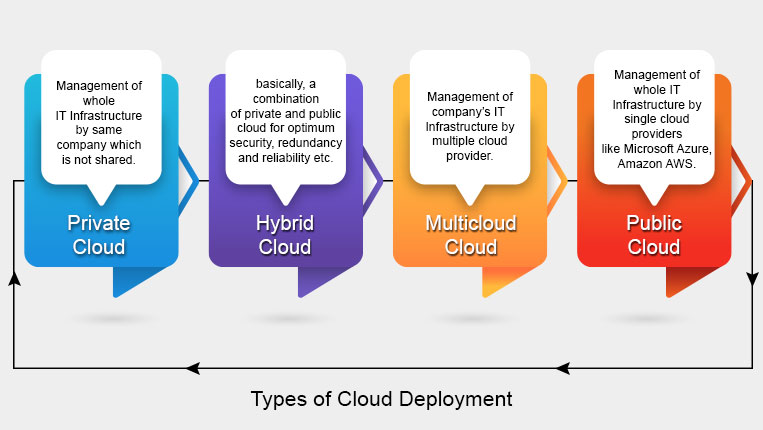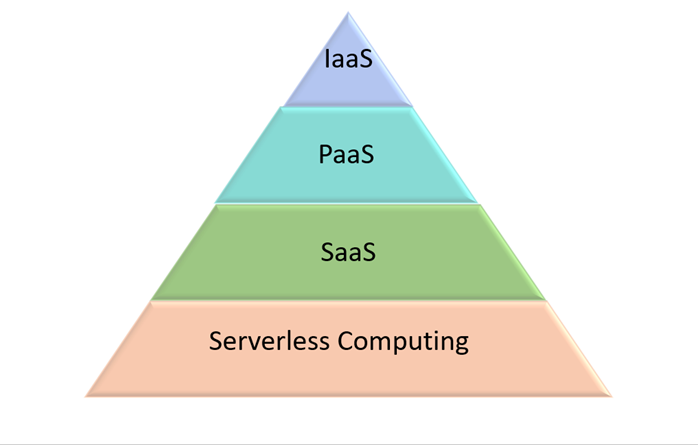What Is Cloud Computing: Unfolding Cloud For Unprecedented Business Evolution
Tech Insights | 27 July 2021 | Ratna Priya
With the burgeoning demand of cloud computing models, various organizations are arising with enormous strategies designed specifically to solve infrastructural challenges that are frequently faced by businesses and organizations. With an incredibly rapid increase in data utilisation that has accompanied society’s transition into the digital twenty-first century, organizations and individuals are struggling a lot to keep their critical information, programmes, and systems up and running on in-house computer servers. With the proper utilization of cloud deployment models, businesses are availing multiple benefits like boosted productivity and cost savings thereby providing a competitive advantage to the organization. Cloud computing revamps IT infrastructure into a utility by allowing you to connect to it via the internet and use computer resources without having to build or maintain them on-premises.
Over the last decade, cloud computing has grown substantially. Cloud deployment models illustrate how servers are deployed and provisioned over the internet so that they may be accessed remotely by individuals and businesses without having to setup them.
What is Cloud Computing?
Cloud computing is the adoption of various internet-based services to accomplish tasks such as storing, organizing, and processing data on a global storage system that can be accessed from any location rather than a single system. Cloud-based data, rather than being kept on your own device, is stored on servers controlled by corporations like Amazon, Microsoft, and Google and made available to you over the internet. You are a client of cloud services provider if you use Gmail, Netflix to stream movies, or Spotify to listen to your favourite songs.
This data belongs to the user and is physically stored on a service provider’s server, which is maintained by a third party and can be accessed by anybody with the appropriate security credentials. This is an unfortunate circumstance. However, appropriate security and passwords can provide some protection for the data.
Benefits Of Cloud Computing
With the statistics pointing to the business efficiency, cost-benefits, and competitive advantages that cloud computing offers, a huge section of the corporate community is still unaware of the advantages provided by cloud computing. Within businesses, multiple deployment options deliver distinct flexibility, agility, cost control, and data management. Not only this, but firms can also deploy and deliver a variety of services using cloud computing service models, which are classified by roles, service providers, and user companies.


Reduced IT costs:
You may offload part or all the expenses and effort procurement, installing, customizing, and administering your own on-premises infrastructure to the cloud.
Improve agility and time to value:
Instead of spending long periods of time for IT to respond to a request, install and setup supporting hardware, and install the software, your company can start using corporate apps in minutes using cloud. You can also give some people, like as developers and data scientists, access to software and support infrastructure via the cloud.
Scalable and cost effective:
You can scale capacity up and down in response to spikes and dips in traffic in the cloud, rather than acquiring excess capacity that sits unused during calm periods. You can also use the worldwide network of your cloud provider to bring your apps closer to users all around the world.
High Performance and Enhanced Security:
The encryption of data being transported over networks and kept in databases is the key to this increased security. By encrypting data, hackers and those who are not permitted to see it have a harder time accessing it. Different security settings can be established dependent on the user with most cloud-based services as an added security feature that automatically increases its performance for its end users.
Types of Cloud Deployment
Depending on their business demands, different firms have quite diverse performance requirements. The required level of performance in terms of concurrency, costs, security, privacy, and authority over the desired data are the key factors. It is not essential that only the known names own these cloud infrastructures rather depending on whether user needs public, private or hybrid cloud, it can be deployed as per the requirement.


Public Cloud
Third-party cloud service providers own and run public clouds, which supply computing resources such as servers and storage over the Internet. An example for the same is Microsoft azure that is world’s second largest IaaS and PaaS service provider after AWS. The cloud provider operates and controls all hardware, software, and other supporting infrastructure in a public cloud.
Private Cloud
A private cloud platform is a set of cloud computing services that is only used by one enterprise or organisation. A private cloud might be physically located at a business’s datacentre. As a matter of fact, there are multiple companies which pay for third – party service providers for the hosting of their private clouds. A private cloud’s services and infrastructure are kept on a private network.
Hybrid Cloud
Hybrid cloud platform is an amalgamation of public and private clouds. These are linked by technology that allows data and applications to flow between them. By allowing data and apps to flow between private and public clouds, a hybrid cloud gives your company greater flexibility, more deployment options, and helps optimise your existing infrastructure, security, and compliance.
Multi Cloud
Multiple public clouds are referred as multi-cloud. A multi-cloud deployment is when a corporation employs various public clouds from different cloud providers. In a multi-cloud setup, instead of using one vendor for cloud hosting, storage, and the entire application stack, a company uses multiple.
Types Of Cloud Computing Services: IaaS, PaaS, serverless and SaaS
The four basic forms of cloud computing services are infrastructure as a service (IaaS), platform as a service (PaaS), serverless computing, and software as a service (SaaS). They are sometimes referred to as the cloud computing stack because they are built on top of one other. It is easier to meet your company’s goals if you know what they are and how they differ.


IaaS- Granting pay-as-you-go access to basic computing resources such as physical and virtual servers, networking, and storage over the internet, IaaS delivers on demand access to fundamental computing resources. Consumers can scale and contract resources as needed with IaaS, which eliminates the need for large, upfront capital expenditures, needless on-premises or ‘owned’ infrastructure. IaaS, in comparison to SaaS and PaaS, offers customers the most control over cloud computing resources.
PaaS- PaaS offers programmers with an on-demand platform—hardware, a complete software suite, infrastructure, and even development tools—for executing, deploying, and managing applications without the investment, intricacy, or inflexibility of sustaining that platform on-premises. With PaaS, the cloud service provider administers everything in their data centre, comprising servers, networking, storage, desktop virtualization, middleware, and datasets. To run, build, test, deploy, maintain, update, and grow applications, developers just select from a menu to ‘spin up’ servers and environments.
Serverless Computing
Serverless computing (sometimes known as just serverless) is a cloud computing approach that delegates all backend infrastructure management responsibilities to the cloud provider, thereby allowing developers to concentrate all of their work and exertion on the code and business logic particular to their applications.
SaaS- SaaS (also known as cloud-based software or cloud apps) is cloud-based software application that users access and use through a web browser, a dedicated desktop client, or an API that assimilates with your pc or android operating system. SaaS users typically pay a monthly or annual membership fee, while some may provide “pay-as-you-go” billing depending on actual usage.
Conclusion
Organizations had long felt worries about data privacy and security in cloud deployment methods, particularly in a shared public cloud architecture. However, major cloud vendors such as Amazon, Microsoft, Google, and IBM have undoubtedly allayed these concerns, nevertheless they have also ensured the most advanced security measures and layers to assure data protection. With these technological developments, as well as the tremendous success and inclination shown by enterprises to use cloud computing solutions for success and speed, cloud computing is already in for a very exciting opportunity and interesting future.
Who We Are
ITOne Infotech headquartered in Pune is an entity of One Group of Companies. We are a one-stop destination for all your ITSM needs, envisioned to rank as a top managed service provider with global footprints.
Supported Industries
Address
Kundan Bhavan, Kundan Nagar, Mumbai-Pune Road, Dapodi, Pune 411012 Maharashtra (IN)




















